If you’re looking for a houseplant that’s easy to care for, resilient, and beautiful — the spider plant (Chlorophytum comosum) is your perfect pick. Known for its gracefully arching, variegated green and white striped leaves and adorable baby “spiderettes,” this plant has earned a place in homes and offices worldwide.
Spider plants are not only aesthetically pleasing but also act as natural air purifiers, removing toxins like carbon monoxide, formaldehyde, and benzene. The best part? They’re one of the easiest plants to maintain with minimal effort. Whether you’re a seasoned plant enthusiast or just starting your indoor jungle, this guide will help you care for your spider plant efficiently and naturally.
Let’s dive in.
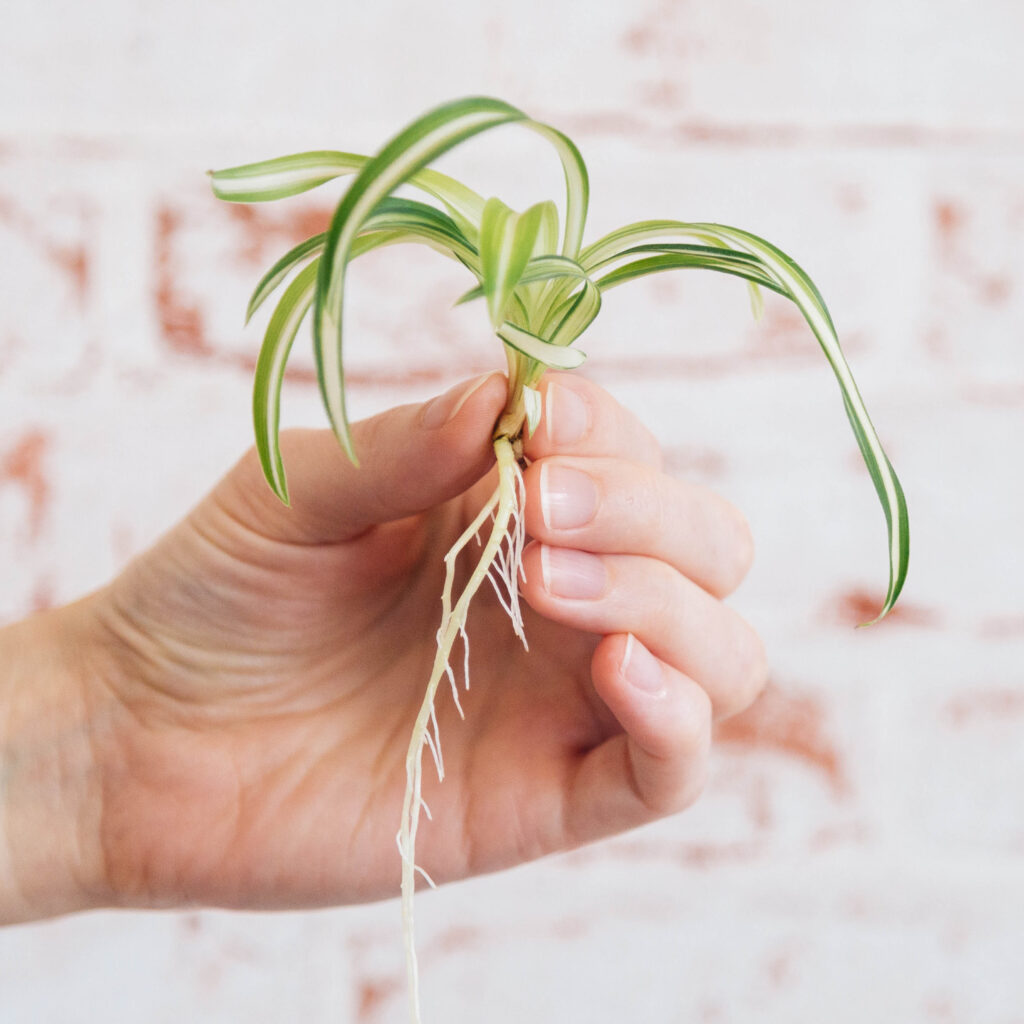
Light Requirements for Spider Plants
Spider plants thrive best in bright, indirect sunlight. They’re quite adaptable and can tolerate a range of light conditions, but to keep their leaves vibrant and promote healthy growth, it’s essential to understand their ideal lighting.
Ideal Lighting:
- Bright, filtered light is perfect.
- Tolerates partial shade but may lose its vibrant stripes in very low light.
- Avoid direct harsh sunlight, which can scorch the leaves.
Efficient Tip: Place your spider plant near an east- or north-facing window where it can get bright but indirect morning or afternoon light.
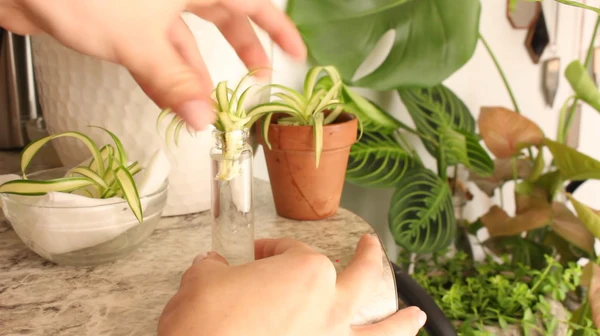
Watering Spider Plants Correctly
One of the most important factors in efficiently caring for a spider plant is proper watering. These plants prefer evenly moist soil but dislike sitting in water.
Watering Guidelines:
- Water when the top 1–2 inches of soil feel dry.
- Use room-temperature, filtered, or rainwater to avoid chlorine and fluoride, which can cause leaf tip browning.
- Reduce watering frequency in winter when the plant’s growth slows down.
Watering Schedule:
- Spring to Fall: Every 7–10 days.
- Winter: Every 2–3 weeks or as needed.
Pro Tip: Always check soil moisture before watering. Overwatering is one of the quickest ways to harm a spider plant.
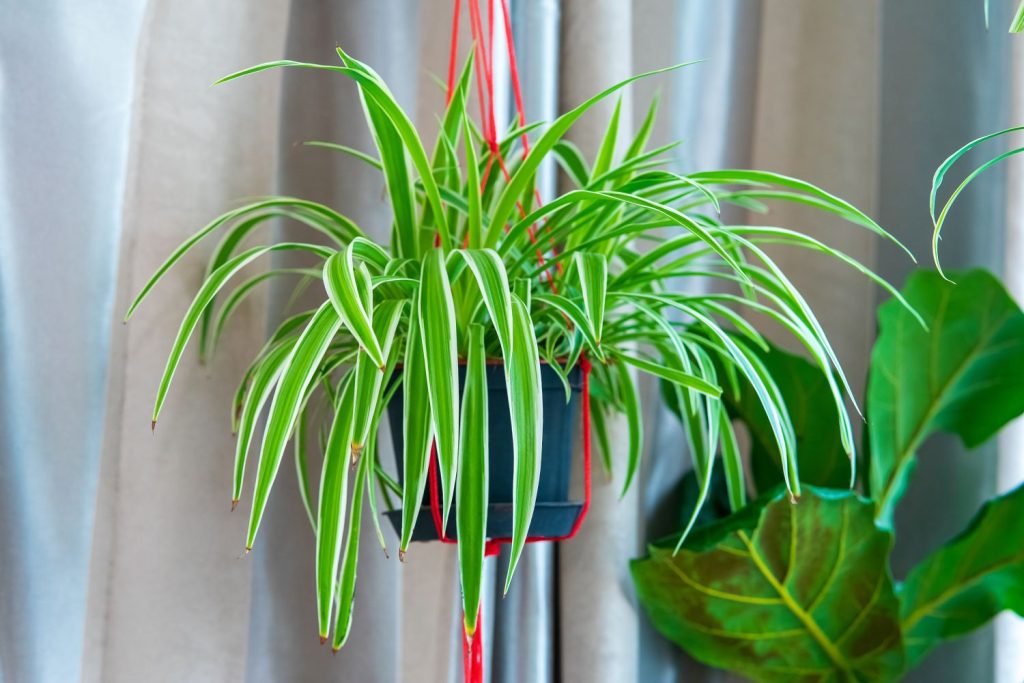
Best Soil Type for Spider Plants
Spider plants flourish in well-draining, loose, and nutrient-rich soil.
Recommended Soil Mix:
- 2 parts organic potting soil
- 1 part perlite or coarse sand
- Optional: Add a small amount of coco coir or peat moss to improve moisture retention without causing waterlogging.
Efficient Tip: Avoid heavy, clay-based soils that hold water and increase the risk of root rot.
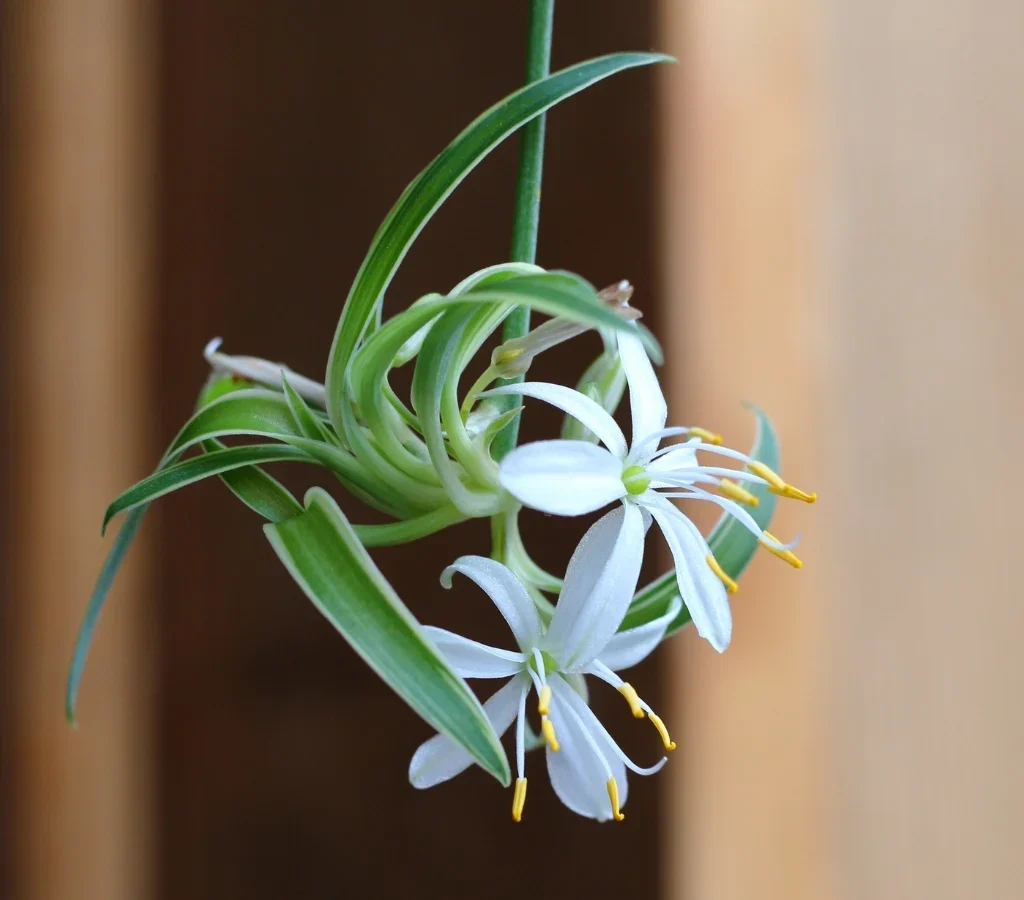
Temperature and Humidity Preferences
Spider plants are fairly tolerant but do best in moderate, stable conditions.
- Ideal temperature: 65°F–80°F (18°C–27°C)
- Avoid exposure to temperatures below 50°F (10°C)
- Prefers average to slightly humid indoor environments
Natural Humidity Boost:
- Place a tray of water and pebbles beneath the plant’s pot.
- Mist leaves occasionally during very dry seasons.
- Group plants together to create a naturally humid microclimate.
Pruning and Cleaning Spider Plants
Efficient care includes regular maintenance to keep your spider plant looking its best.
Pruning Tips:
- Remove yellow, brown, or damaged leaves at the base with clean, sharp scissors.
- Trim browning leaf tips, a common issue caused by fluoride in water or dry air.
- Prune spiderettes (baby plantlets) if you don’t wish them to grow or if they’re overwhelming the mother plant.
Cleaning:
- Wipe leaves gently with a damp cloth to remove dust.
- Avoid harsh chemical leaf sprays.
Efficient Tip: Regularly pruning off dead or yellowing leaves redirects the plant’s energy to new, healthy growth.
Natural Fertilizing for Healthy Growth
Spider plants aren’t heavy feeders but do appreciate occasional nourishment, especially during the growing season.
Natural Fertilizer Options:
- Diluted organic liquid fertilizer once a month in spring and summer.
- Compost tea every 4–6 weeks.
- Banana peel water (soaked peels in water for 48 hours) as a potassium-rich treat.
Fertilizing Schedule:
- Spring to Fall: Monthly
- Winter: None or very sparingly
Efficient Tip: Always water the plant before applying fertilizer to prevent root burn.
Natural Pest Control
Spider plants are quite pest-resistant, but occasionally they might face issues like aphids, spider mites, or mealybugs.
Natural Pest Remedies:
- Neem oil spray: A natural, non-toxic insecticide.
- Insecticidal soap: Mild and effective.
- Water shower: Rinse the plant thoroughly under lukewarm water to dislodge pests.
Efficient Tip: Regularly inspecting your plant helps you catch potential infestations early, making them easier to manage.
Propagating Spider Plants Easily
One of the joys of owning a spider plant is how effortlessly it multiplies through its hanging baby plantlets, called spiderettes.
Propagation Methods:
- In Water:
- Cut a healthy spiderette.
- Place the base in a glass of water.
- Roots should develop within 1–2 weeks.
- Transfer to soil once roots are about 2 inches long.
- In Soil:
- Cut spiderettes and plant directly in moist, well-draining soil.
- Keep soil slightly damp until roots establish (about 2–3 weeks).
Efficient Tip: Leave the baby attached to the mother plant while rooting in a nearby pot — once established, cut the connecting stem.
Benefits of Having Spider Plants Indoors
Besides their stunning appearance and easy care, spider plants offer several benefits:
- Air purification: Removes harmful toxins like carbon monoxide, benzene, and formaldehyde.
- Pet-friendly: Non-toxic to cats and dogs.
- Low-maintenance: Ideal for busy plant lovers.
- Natural humidifier: Adds moisture to indoor air.
- Stress reliever: Studies show indoor plants improve mood and concentration.
Common Care Mistakes to Avoid
Even though spider plants are forgiving, here are a few pitfalls to dodge for efficient care:
- Overwatering: Leads to root rot.
- Poor drainage: Always use pots with drainage holes.
- Exposure to harsh sun: Causes leaf scorch.
- Ignoring browning tips: Often a sign of fluoride sensitivity or low humidity.
Final Thoughts
Caring for a spider plant efficiently doesn’t require elaborate routines or complex tools. With a little attention to lighting, watering, and regular maintenance, your spider plant will reward you with lush green foliage, graceful arches, and adorable spiderettes.
These resilient plants are perfect for beginner gardeners and experienced plant parents alike, adding life and freshness to any indoor space. Stick to natural care methods — organic soil, gentle misting, natural fertilizers, and non-toxic pest controls — and your spider plant will thrive effortlessly for years.

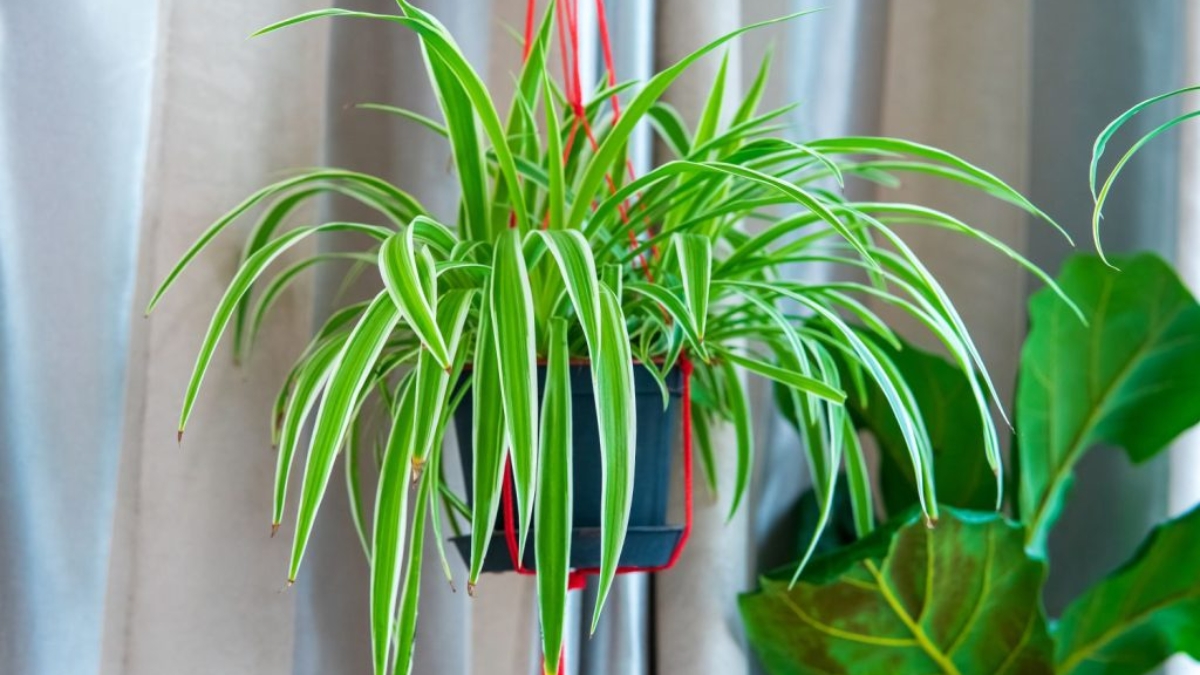




Leave A Comment